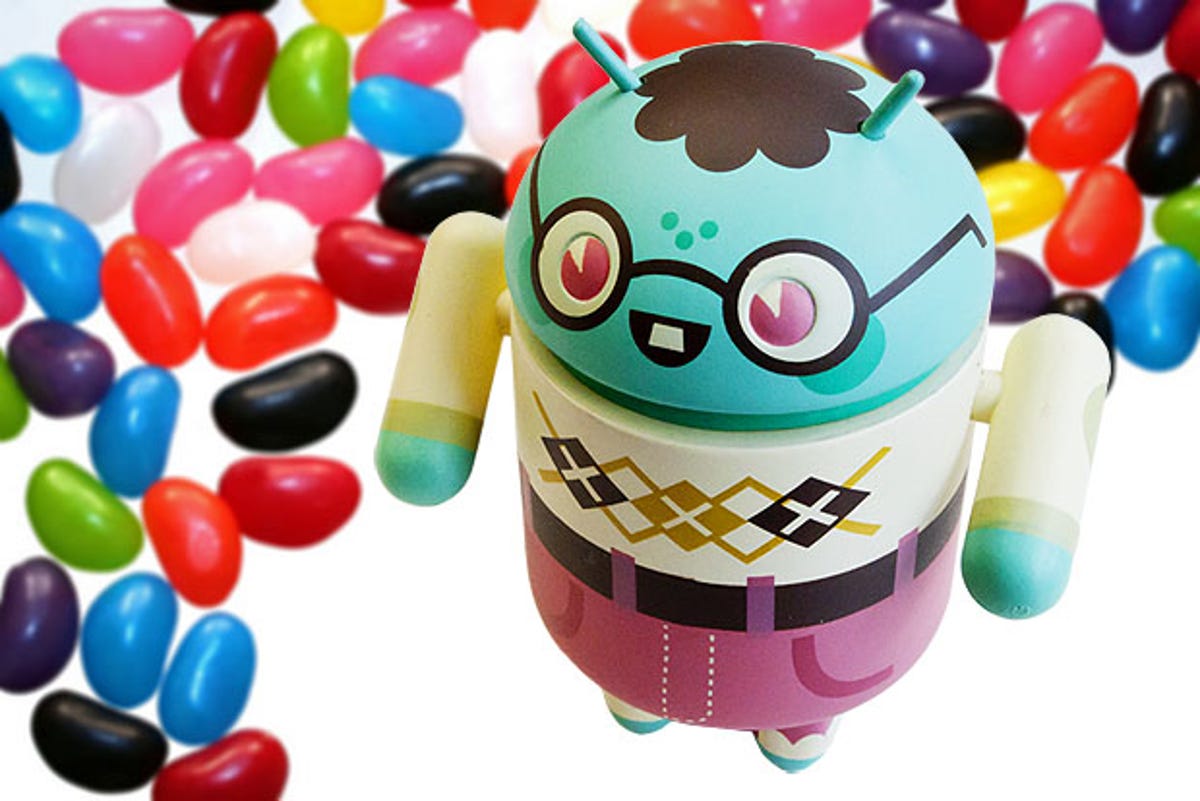
Google has officially revealed Android 4.1 Jelly Bean, the next generation of software for Android mobile phones and tablets — and it hits phones next month.
Google Now is the most impressive new feature. It promises just the right information at just the right time, automatically prompting you with useful information based on your search history and calendar.
Google Now reads your mind
To fire up Google Now, tap on the search box or swipe up from the bottom
of the screen. That pulls up cards filled with up-to-the-minute
information on the stuff you’re doing. For example, it learns when you
commute
and tells you traffic information at those times. If you’re near a bus
stop it tells you when the next bus is due. When you have an appointment
coming up in your calendar, Google Now not only reminds you, it nudges
you when you have to leave and gives you the relevant public transport
information.
Google Now can automatically update you on the status of something like a flight or sports team. You don’t even need to tell your phone which flight or team — it works that out from your searches.
Basically, Google is now inside your mind. It’s certainly a better personal assistant than Apple’s disappointing Siri.
Home screen and notifications
On the Jelly Bean home screen, icons and widgets move out of the way when you drag in a new widget. To remove apps and widgets from a home screen, just flick them off the screen.
Notifications now have loads of information packed in. Each alert expands and collapses as they bubble up to the top,
or you can expand them with a two-finger gesture. For example, Gmail messages show subject lines, calendar alerts let you email everybody in the meeting with canned responses if you’re running late, and photos appear and can be shared to Google+ without opening the app. These alerts can be dismissed in one tap.
Search
Search has been redesigned from the ground up, with
improved voice search and answers to queries with the actual answer to your question, instead of a list of web links. Answers appear as cards that you can swipe away the to find a list of links waiting for you.
Jelly Bean also adds a more advanced predictive keyboard
and offline voice typing, so you don’t need a Wi-Fi or 3G connection to dictate emails or messages to your phone. English is supported first, with more languages to follow. Arabic, Persian, Hebrew, Hindi and Thai are also being added to Android.
Speech and gestures can be combined for those with sight issues to use the phone, with Bluetooth support for braille devices also added.
Faster frame rate
Jelly Bean has a higher frame rate so animations, menus and scrolling look silky smooth, thanks to triple buffering in the graphics pipeline. Jelly Bean can anticipate where your finger will be in order to make the screen respond faster.
The NFC Android Beam function can now send a photo or video by tapping two phones against one another, or you can pair a phone with a Bluetooth speaker by tapping them together.
When can I get Jelly Bean?
Jelly Bean arrives as an over-the-air update for the Samsung Galaxy Nexus, Motorola Xoom, and Samsung Nexus S in mid-July.
What do you think of Jelly Bean? Tell me your thoughts in the comments or on our Facebook page.



